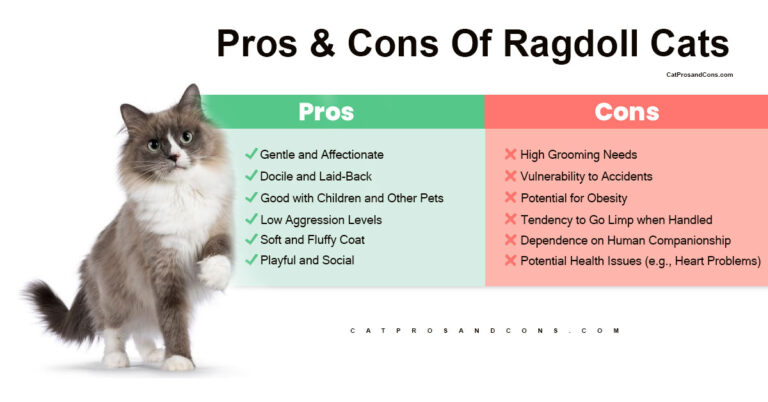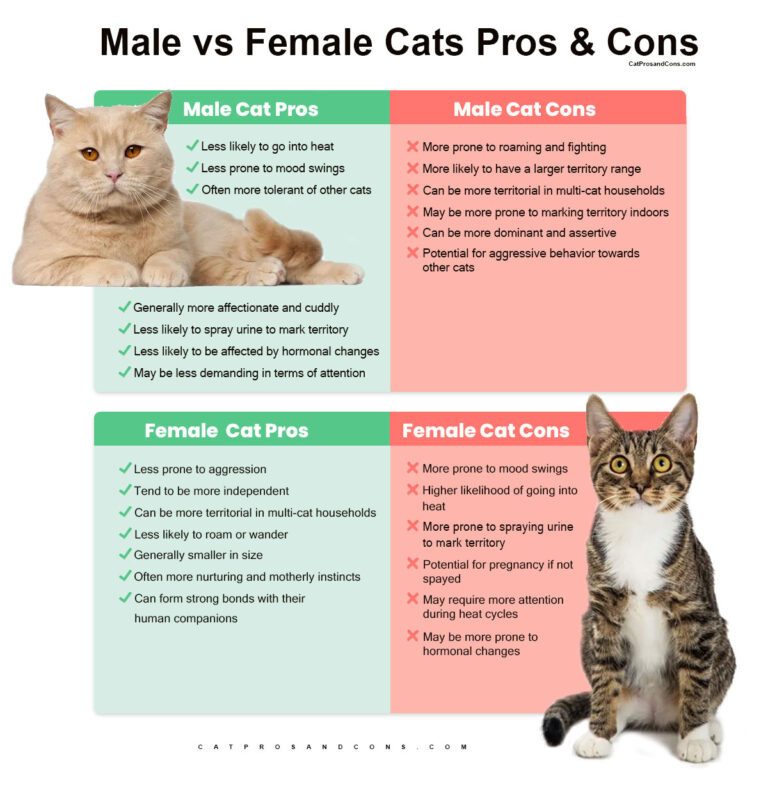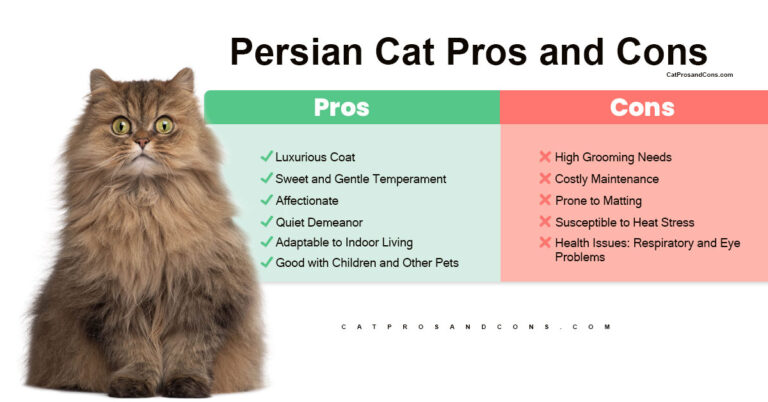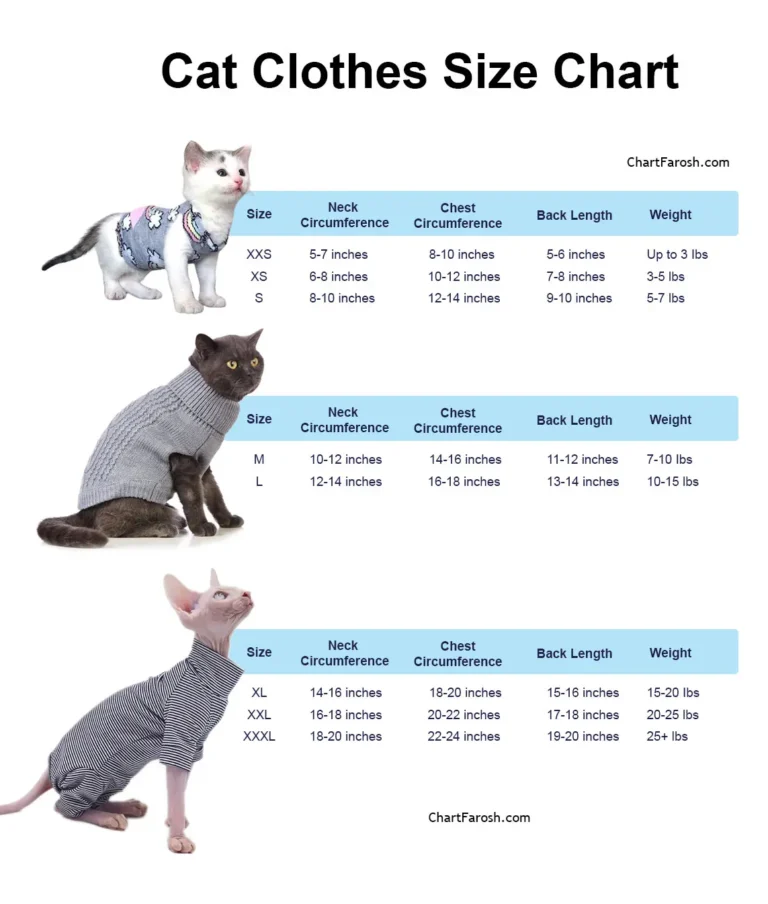Cat Emotions Chart
Did you know that cats, like humans, experience a wide range of emotions? Recognizing cat emotions isn’t merely a parlor trick; it’s essential for responsible pet ownership. Just as we appreciate when someone understands our moods, cats benefit from owners who can recognize and respond to their emotional cues.
This understanding forms the cornerstone of effective communication and bonding between humans and their furry companions.
Cats have been adored as household pets for centuries, gracing our homes with their presence and peculiar personalities. You can enhance your relationship by learning to interpret the subtle signs that reveal their feelings, ensuring your cat feels safe and loved. This improves your cat’s quality of life and enriches your experience as a pet owner.
Today, we’ll explore the importance of recognizing and understanding these emotions, introducing you to the invaluable tool of the cat emotions chart. This chart is a comprehensive guide that breaks down feline emotions into easily understandable categories.
This chart is a practical resource that empowers cat owners to provide better care and support for their pets.
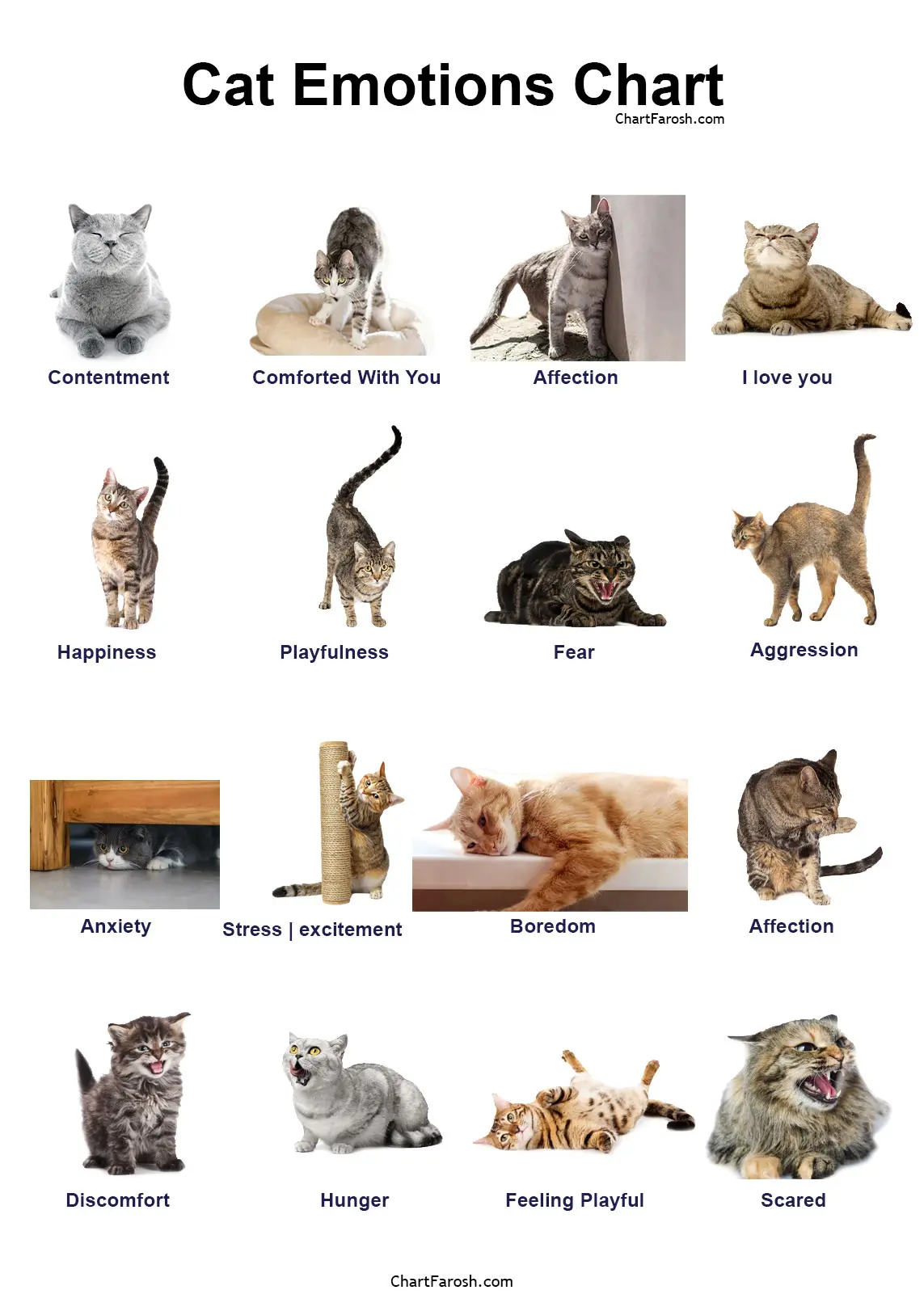
Table of Contents
Cat Emotion Chart
When you recognize how your cat feels, you can respond in ways that make them feel better. This mutual understanding fosters trust and deepens your relationship. Imagine being able to tell when your cat is happy, anxious, or needs comfort. It’s like speaking their language, making your connection even stronger.
Recognizing your cat’s emotions is crucial for their health and well-being. Cats often hide signs of stress or illness. By understanding their emotional cues, you can detect these issues early. For instance, a usually playful cat that suddenly becomes withdrawn might be experiencing stress or pain.
Identifying these changes promptly allows you to seek veterinary care before conditions worsen. Conversely, knowing when your cat is content and happy ensures you can maintain their well-being through activities and environments they enjoy.
| Emotion | Behavior | Description |
|---|---|---|
| Contentment | Relaxed body posture, purring, slow blinking | Indicates comfort and satisfaction |
| Happiness | Tail held high, relaxed ears, playful behavior | Shows enjoyment and positive mood |
| Fear | Hiding, flattened ears, dilated pupils | Indicates feeling threatened or unsafe |
| Aggression | Hissing, growling, arched back | Displays readiness to defend territory or confront threat |
| Anxiety | Restlessness, excessive grooming, hiding | Indicates worry or unease, often due to unfamiliar situations |
| Playfulness | Chasing, pouncing, tail twitching | Shows engagement and enjoyment in playful activities |
| Curiosity | Exploring and investigating new objects or scents | Indicates interest and desire for stimulation |
| Discomfort | Excessive meowing, restlessness | Indicates physical or emotional discomfort |
| Affection | Head bunting, rubbing against the owner | Shows love and attachment towards the owner |
| Boredom | Lethargy, excessive sleeping, lack of interest in toys | Indicates lack of mental or physical stimulation |
| Contentment | Relaxed body posture, purring, slow blinking | Indicates comfort and satisfaction |
| Hunger | Meowing, pacing, rubbing against food bowls | Indicates desire for food |
| Loneliness | Excessive vocalization, seeking attention | Indicates desire for companionship |
Also read: Cat Tail Meanings Chart
How Many Emotions Does A Cat Have?
Cats can exhibit a surprising range of emotions. While they might not have the full spectrum of human feelings, cats experience basic social emotions. They exhibit different behaviors which highlight the emotions they may be feeling. From happiness to fear, these emotions show the attachment with the owner and how safe they feel.
Here are some basic emotions which you can see in cats.
Contentment
Contentment in cats is often accompanied by a rhythmic purring, which signals their pleasure and helps heal their bodies by reducing stress and promoting relaxation through low-frequency vibrations.
Happiness
When cats display happiness, their body language is open and inviting. This happiness can also lead to a more robust immune system as stress levels decrease and overall health improves.
Fear
During fear, a cat’s adrenaline spikes, preparing them for fight or flight. Owners should recognize these signs as a cue to minimize potential threats and create a calming environment.
Aggression
Aggression can be a cat’s response to pain. It is important to observe if aggressive behavior correlates with potential health issues, necessitating a vet visit to rule out or treat any underlying medical problems.
Anxiety
Cats with anxiety may benefit from environmental enrichment, like hiding spots and high perches, which provide safety. Consideration of their lineage and breed can also provide insights into their stress thresholds and needs.
Playfulness
Playfulness is practical in a cat’s development, particularly in young kittens, as it hones their hunting skills and physical coordination. Providing varied types of play can help stimulate their growth and development.
Curiosity
A cat’s curiosity helps to keep its cognitive functions sharp. Stimulating its environment with new toys or puzzle feeders can enrich its daily life and prevent cognitive decline, especially in older cats.
Discomfort
Persistent discomfort can sometimes lead to behavioral changes. Monitoring their environment for sudden changes that could cause stress, such as loud noises or new pets, can mitigate this discomfort.
Affection
Affectionate behaviors, such as head bunting, release oxytocin in both the cat and the human, strengthen the emotional bond, and provide mutual benefits by reducing stress and promoting feelings of happiness.
Boredom
To combat boredom effectively, introduce activities that stimulate a cat’s natural hunting instincts, such as feather toys or lasers, to keep them engaged and mentally sharp.
Hunger
Regular, scheduled feeding times and the type of food provided can influence a cat’s behavior significantly. Proper nutrition is essential for maintaining energy levels and overall health.
Loneliness
A lonely cat may require more social interaction from other pets or humans. Social breeds may benefit from a companion pet or increased interactive playtime to satisfy their social needs.
By understanding these additional aspects of cat emotions and behaviors, owners can create a nurturing environment that addresses their cats’ physical and emotional needs, leading to a happier, healthier pet. The table below summarizes the various cat emotions.
Also read: Cat Petting Chart
Conclusion
In wrapping up our exploration of cat emotions, it’s clear that understanding your furry friend’s feelings is more than just a neat trick—it’s essential for fostering a strong, healthy relationship.
Each emotion, from contentment to loneliness, tells a story about what your cat is experiencing and provides key insights into how we can better meet their needs.
By tuning into these emotions and responding appropriately, we can significantly enhance our cats’ quality of life. This isn’t just about ensuring they’re fed and sheltered; it’s about feeling secure, loved, and stimulated. After all, a happy cat makes for a happy home.
So, take this knowledge, use the cat emotions chart as your guide, and connect with your cat on a deeper level. Whether adjusting their environment, introducing new toys, or spending more quality time together, every little effort counts.
Remember, a well-understood cat is a well-loved cat—and isn’t that what we all want for our beloved pets? Let’s prioritize their well-being and enjoy the beautiful, enriching journey that comes with truly understanding our feline companions.


